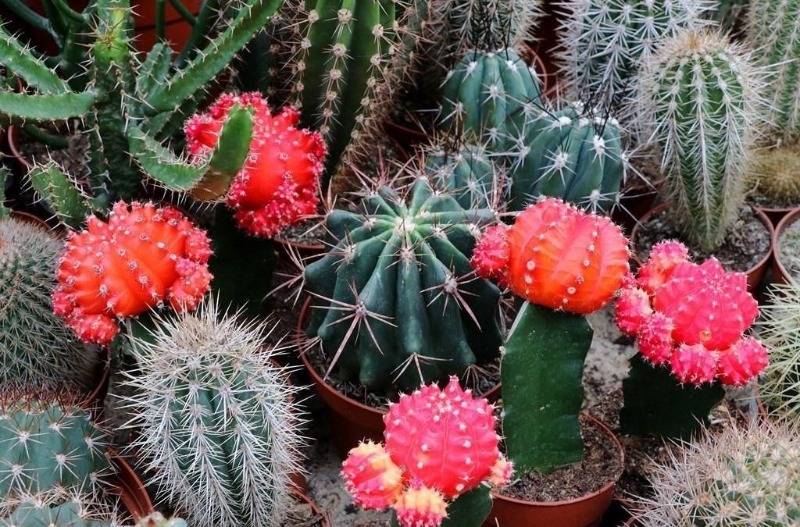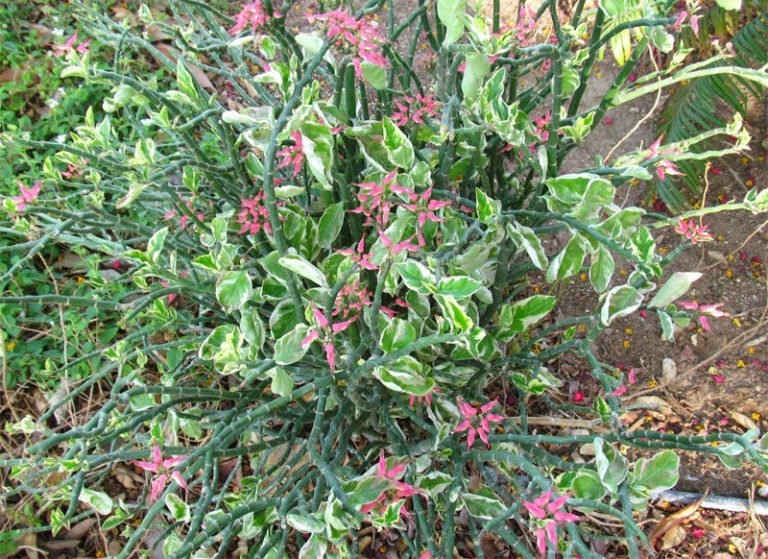To grow a beautiful and healthy cactus, it is necessary to take care not only of maintaining the temperature regime, adequate lighting and proper watering, but also of timely feeding. In our article we will tell you what fertilizers are required for succulents.

Nitrogen-containing
Nitrogen contributes to the rapid collection of green mass. But cacti do not need a lot of this fertilizer, as they develop much more slowly than other houseplants.
An excess of nitrogen causes the succulent to grow rapidly, while its stems become loose and watery. Another sign of a large amount of fertilizer is cracked skin. But the lack of nitrogen is harmful as well as its excess, because it leads to a halt in the normal development of the plant.
Potassium
Potassium strengthens the tissues of the succulent and accelerates the process of coarsening of its outer covers, which makes the plant more resistant to various diseases, temperature changes and other unfavorable conditions.
Lack of potassium can provoke the development of chlorosis, in which the activity of photosynthesis decreases and the formation of chlorophyll is disrupted. This leads to yellowing of the plant, drying out of its upper part and the gradual death of the roots. But an excess of this feeding is no less harmful than its lack. A large amount of potassium causes the growth of the succulent to stop and damage to its root system.
Calcium
Calcium is responsible for the formation of strong thorns, the appearance of buds and the duration of flowering. With a lack of mineral, succulent spines become fragile, and the root system stops developing.
However, an excess of calcium is more harmful than a lack of it, because in this case the flower absorbs magnesium and potassium poorly. If the growth of the succulent has slowed down, and stripes of white-brown color appear on the soil surface, then there is more calcium than is required.
Phosphorus
This type of feeding is responsible for the normal formation and development of the root system. Also, phosphorus stimulates the appearance of buds. Therefore, if there is not enough mineral in the soil, the succulent simply cannot bloom. At the same time, compliance with other conditions necessary for the beginning of flowering will not give any results. Only a combination of temperature, sufficient humidity and lighting, as well as regular fertilization of the cactus with phosphorus will contribute to the development of peduncles.
You should not worry about the appearance of an excess of phosphorus, because this happens extremely rarely. But if this does happen, the plant will not be able to fully absorb iron and zinc, which will lead to the development of chlorosis.
In order for the cactus to develop normally, fertilization is necessary every 14 days, starting in March and ending in September. You need to stop using top dressing at the beginning of the dormant period, that is, from October to February. Also, succulents do not need fertilizers if the weather lasts for a long time. During such periods, the metabolism of plants slows down and they practically do not need additional nutrients.


